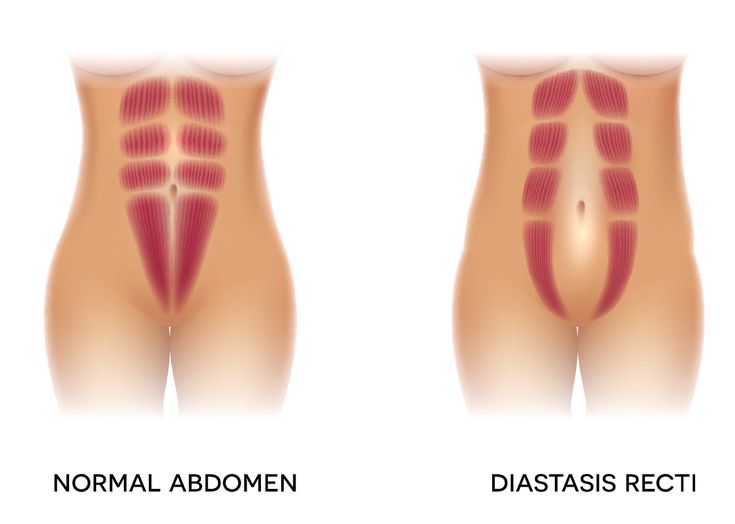Treatment for diastasis rectus
DIastasis recti also called DRA (diastasis rectus abdominus) and most commonly occurs during or after pregnancy.
The stretching of the uterus leads to the abdominal wall, rectus abdominus muscles and the linea alba being stretched. Pregnancy hormones such as elastin aid in this process of stretching naturally during pregnancy.
As we know, connective tissue does not contain a lot of blood supply, ennervation or elasticity so once these hormones are no longer being secreted women can be left with a gap between their rectus muscles, also known as 'baby pooch'.
The linea alba is the name of the sheath of connective tissue that runs along the midline of the abdomen.
How to detect diastasis recti
Diastasis recti is considered to be a gap of more than 2.7 cm in the rectus abdominus muscles.

There are three types of Diastasis Recti separations, 1) above the navel 2) below the navel 3) open diastasis
The larger the opening in the diastasis, the more difficult it is to treat. Mild separations are fairly straightforward where more severe openings may need stronger intervention.
Treating Diastasis Recti
The intention for this treatment is to promote the connection of the linea alba in the centre line.
Start the cup on the lateral side of the abdomen, and move toward the centre line. Two cups can be used at one time, moving laterally toward the centre, but never past the centre line – the linea alba. A large cup with very light suction can be left over the linea alba (gap) for up to 5 minutes. Diastasis Rectus is seen as a weakness in the Conception Vessel, Spleen, and Kidney Yin function.
The Dai Mai is often involved as well as Ren and or Du Mai
Ginger Moxa and gentle tonifying cupping used together can help promote Qi and Blood. Intentional light cupping, as well as patient exercising lateral, oblique abdominal and pelvic floor muscles.











0 comments
Leave a comment
Please log in or register to post a comment